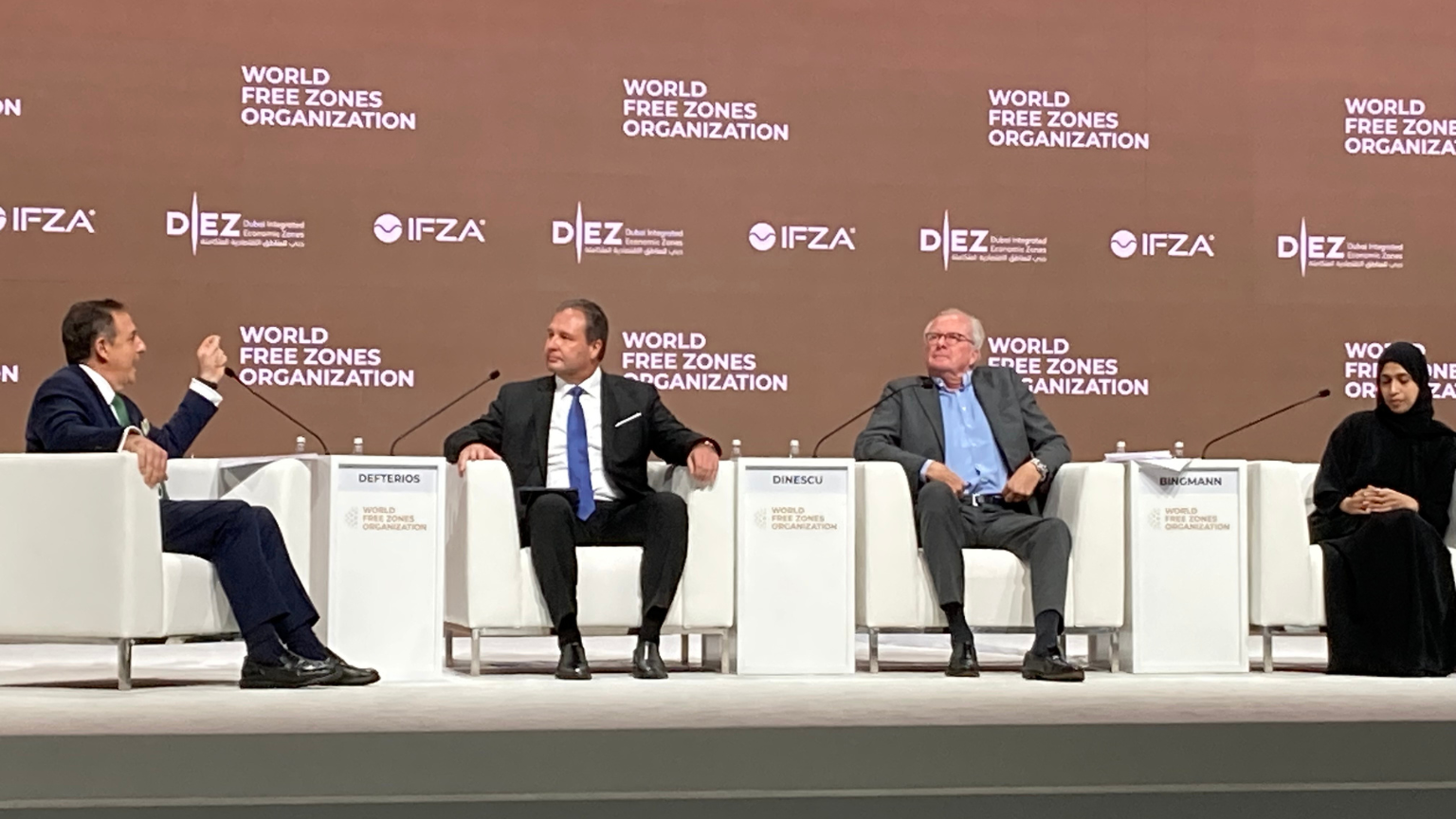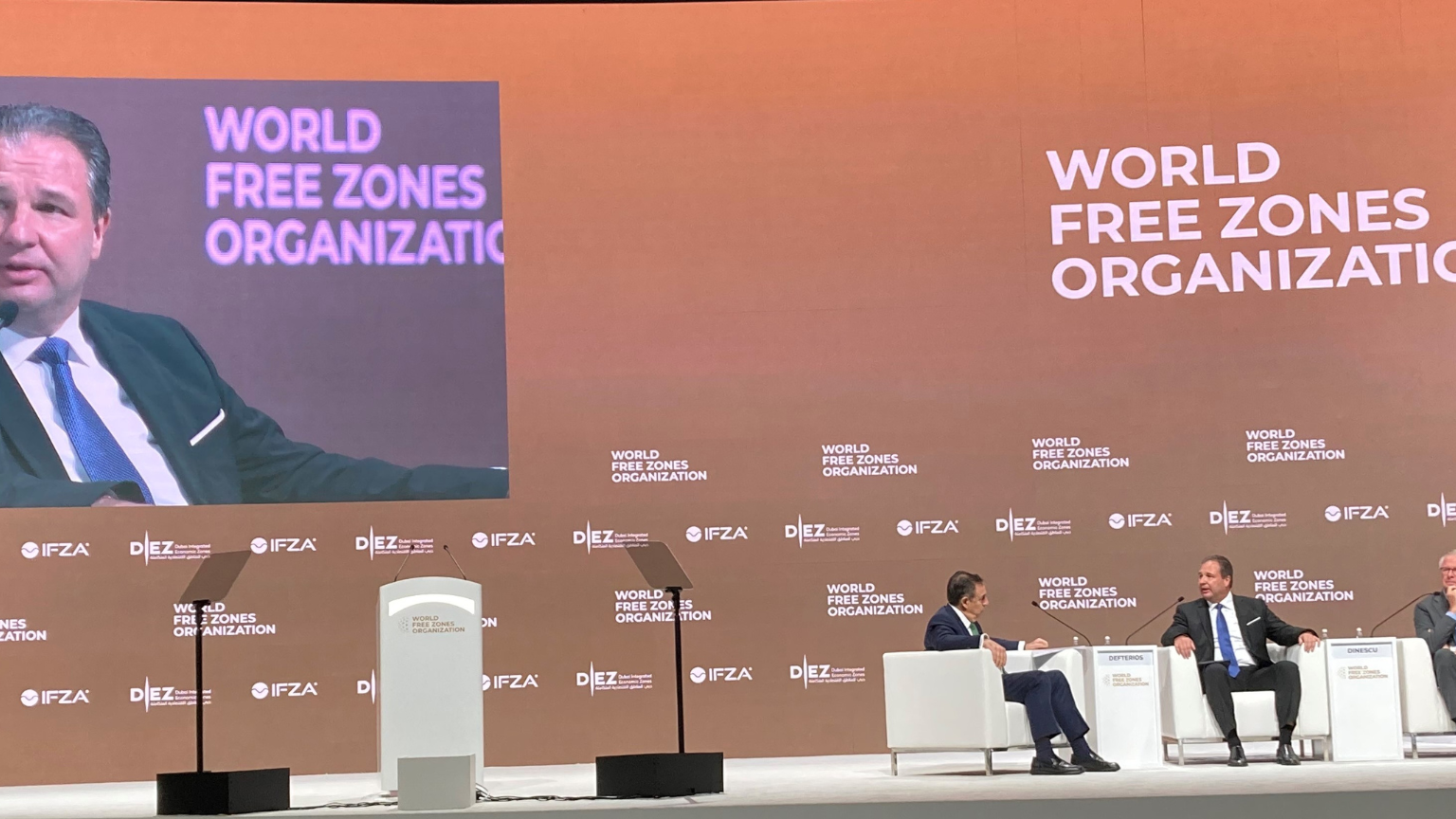Geopolitical upheavals are shifting cross-border freight movements, while disruptive technologies are transforming them. How can we boost the efficiency and resilience of supply chains?
IRU outlined today tested and innovative trade and logistics instruments to mitigate risks and boost resilience to an audience of policymakers and business leaders at the World Free Zones Organization’s annual congress in Dubai, the United Arab Emirates.
Speaking on a high-level panel on the future of logistics, IRU President Radu Dinescu said, “The TIR system has a track record of mitigating risks and elevating the security and efficiency of global supply chains. TIR has cut cross-border transport times in the Gulf Cooperation Council region by more than 90%. Its longstanding track record and state-of-the-art technology and digital tools position it as one of the most important instruments for facilitating international trade.”
“TIR’s impact on cross-border operations has been cemented with the trust created among authorities and the private sector. It brings together – including here in the GCC where almost 100% of overland freight is transported by road – shippers and hauliers, customs authorities, government ministries and international and regional bodies, and, of course, partners such as the World Free Zones Organization,” he added.
Free zones
The TIR system is being increasingly used to optimise freight flows in free zones. The use of TIR to and from free zones increased by 120% from 2023 to 2024.
“For logistics players using free zones, TIR lowers costs while increasing reliability and building trust between logistics players. Greater resilience means lower risks, making free zones more attractive to investors and customers,” said Radu Dinescu.
Resilience
Radu Dinescu also stressed the importance of continuing to use the latest technology, including AI, to reinforce the value of TIR.
“TIR’s globally recognised standards and digital tools, such as its advance cargo pre-declaration system TIR-EPD, are providing a powerful resource for better connectivity to free zones and supporting them in pioneering solutions for faster and more secure trade,” said Radu Dinescu.
“AI and other technological advancements should be a collaborative effort. That requires us to share data across the board. We’re already working on AI in a range of areas and solutions to enhance the resilience of transport and trade,” he added.
Net-zero
Another issue debated was the sustainability of transit and supply chains.
“With a commitment to reach net-zero emissions in the coming decades, IRU’s Green Compact sets the most practical path forward, with a dual pursuit of efficiency measures and alternative fuels. In a cross-border context, TIR is a good example of a proven efficiency measure that can be easily implemented,” said Radu Dinescu.
In a recent study on cross-border transport by road in the GCC region, TIR was shown to reduce CO₂ emissions by 86–95% per tonne of goods transported.
What is TIR?
The United Nations-backed TIR system enables goods to be shipped from a country of origin to a country of destination in sealed load compartments that are controlled by customs via a multilateral, multimodal, mutually recognised system.
TIR streamlines procedures at borders, reducing the administrative burden for customs authorities and transport and logistics companies. It cuts border waiting times significantly, saving time and money.
For private sector companies, the attractiveness of TIR lies in its guaranteed efficiency, the trust that it enjoys from customs authorities worldwide, and its transit facilitation benefits.
In the GCC, TIR volumes have increased by more than ten-fold over the past three years.



